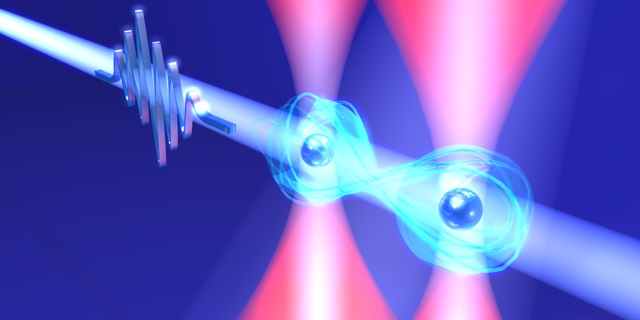RQC Colloquium
13th RQC Colloquium
Speaker
Prof. Kenji Ohmori
(Institute for Molecular Science)Date
16:00-17:00 (JST), Jun. 21, 2023 (Wednesday)
Venue
Hybrid(Zoom・Wako Welfare and Conf. 2F Large Meeting Room)
Title
Ultrafast quantum simulation and quantum computing with ultracold atom arrays at quantum speed limit
Inquiries
rqc_colloquium_inquiry[at]ml.riken.jp
Abstract
Many-body correlations drive a variety of important quantum phenomena and quantum machines including superconductivity and magnetism in condensed matter as well as quantum computers. Understanding and controlling quantum many-body correlations is thus one of the central goals of modern science and technology. My research group has recently pioneered a novel pathway towards this goal by exciting strongly interacting ultracold Rydberg atoms, far beyond the Rydberg blockade regime, by using an ultrafast laser pulse [1-6]. We first applied our ultrafast coherent control with attosecond precision [2,3] to a random ensemble of those Rydberg atoms in an optical dipole trap, and successfully observed and controlled their strongly correlated electron dynamics on a sub-nanosecond timescale [1]. This new approach is now applied to arbitrary atom arrays assembled with optical lattices or optical tweezers that develop into a pathbreaking platform for quantum simulation and quantum computing on an ultrafast timescale [4-6].
In this ultrafast quantum computing, we have recently succeeded in executing a controlled-Z gate in only 6.5 nanoseconds at quantum speed limit, as schematically shown in Fig. 1, where the gate speed is solely determined by the interaction strength between two atomic qubits [6]. This is the fastest record of a controlled gate, a conditional two-qubit gate essential for quantum computing, faster than any other controlled gates with cold-atom hardware by two orders of magnitude. It is also two orders of magnitude faster than the noise from the external environment and operating lasers, whose timescale is in general 1 microsecond or slower, and thus can be safely isolated from the noise.

Figure 1. Conceptual diagram of the ultrafast controlled gate for quantum computing.
Two single rubidium atoms captured in optical tweezers (red light) with a separation of a few micrometers
are entangled by an ultrafast laser pulse (blue light) shone for only ~10 picoseconds [6].
Image source: Dr. Takafumi Tomita (IMS).
References
[1] N. Takei et al., Nature Commun. 7, 13449 (2016).
Highlighted by Science 354, 1388 (2016); IOP PhyscisWorld.com (2016).
[2] H. Katsuki et al., Acc. Chem. Res. 51, 1174 (2018).
[3] C. Liu et al., Phys. Rev. Lett. 121, 173201 (2018).
[4] M. Mizoguchi et al., Phys. Rev. Lett. 124, 253201 (2020).
[5] V. Bharti et al., arXiv:2201.09590 (2022).
[6] Y. Chew et al., Nature Photonics 16, 724 (2022). (Front Cover Highlight)
